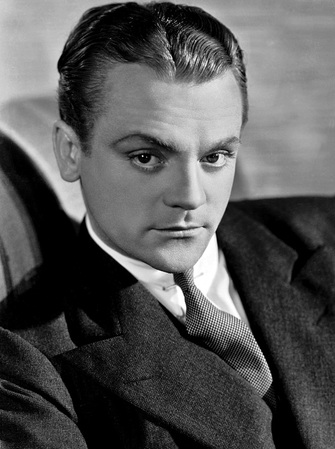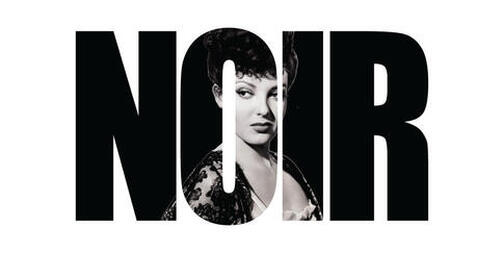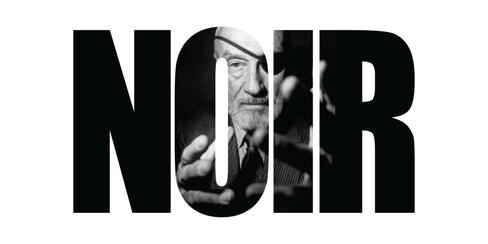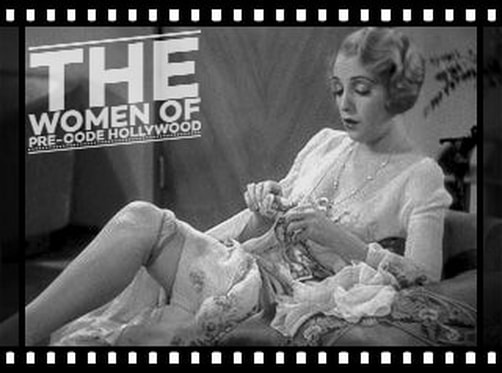JAMES CAGNEY
AND FILM NOIR
While James Cagney is primarily known for his roles in gangster films, he did make notable contributions to the film noir genre as well. Cagney's intense screen presence, dynamic energy, and ability to portray complex characters translated well to the noir atmosphere, adding depth and intrigue to the films in which he appeared.
One of Cagney's significant film noir roles came in the 1949 film "White Heat," directed by Raoul Walsh. In this crime drama, Cagney played the iconic character Cody Jarrett, a ruthless and volatile gangster. Cagney's performance as Jarrett showcased his ability to embody a character on the edge of sanity, capturing his explosive outbursts, twisted loyalties, and psychological torment. His portrayal of Jarrett is often considered one of his most memorable and compelling performances, contributing to the film's noir sensibilities.
Cagney also appeared in other noir-influenced films, such as "Kiss Tomorrow Goodbye" (1950) and "The Roaring Twenties" (1939). Although these films may not fit the strict definition of film noir, they contained elements of crime, moral ambiguity, and dark themes commonly associated with the genre. Cagney's performances in these films showcased his range as an actor, as he brought depth and complexity to morally ambiguous characters.
Beyond his individual performances, Cagney's impact on the film noir genre lies in his influence on subsequent actors and the genre itself. His portrayal of charismatic yet troubled characters, his use of rapid-fire dialogue, and his ability to command the screen with his presence helped shape the noir aesthetic and inspired future actors and filmmakers in the genre.
In conclusion, James Cagney made a notable contribution to the film noir genre with his intense performances, complex characterizations, and his ability to capture the dark and morally ambiguous aspects of the genre. His role in "White Heat" and appearances in other noir-influenced films solidified his status as a significant figure in both the gangster and noir genres, leaving a lasting impact on the film noir legacy.
One of Cagney's significant film noir roles came in the 1949 film "White Heat," directed by Raoul Walsh. In this crime drama, Cagney played the iconic character Cody Jarrett, a ruthless and volatile gangster. Cagney's performance as Jarrett showcased his ability to embody a character on the edge of sanity, capturing his explosive outbursts, twisted loyalties, and psychological torment. His portrayal of Jarrett is often considered one of his most memorable and compelling performances, contributing to the film's noir sensibilities.
Cagney also appeared in other noir-influenced films, such as "Kiss Tomorrow Goodbye" (1950) and "The Roaring Twenties" (1939). Although these films may not fit the strict definition of film noir, they contained elements of crime, moral ambiguity, and dark themes commonly associated with the genre. Cagney's performances in these films showcased his range as an actor, as he brought depth and complexity to morally ambiguous characters.
Beyond his individual performances, Cagney's impact on the film noir genre lies in his influence on subsequent actors and the genre itself. His portrayal of charismatic yet troubled characters, his use of rapid-fire dialogue, and his ability to command the screen with his presence helped shape the noir aesthetic and inspired future actors and filmmakers in the genre.
In conclusion, James Cagney made a notable contribution to the film noir genre with his intense performances, complex characterizations, and his ability to capture the dark and morally ambiguous aspects of the genre. His role in "White Heat" and appearances in other noir-influenced films solidified his status as a significant figure in both the gangster and noir genres, leaving a lasting impact on the film noir legacy.
AVAILABLE FILMS:
13 RUE MADELEINE (1946)
ANGELS WITH DIRTY FACES (1938)
BLONDE CRAZY (1931)
CAPTAINS OF THE CLOUDS (1942)
CEILING ZERO (1935)
CITY FOR CONQUEST (1940)
CROWD ROARS, THE (1932)
DEVIL DOGS OF THE AIR (1935)
DOORWAY TO HELL, THE (1930)
EACH DAWN I DIE (1939)
FIGHTING 69TH, THE (1940)
G-MEN (1935)
HARD TO HANDLE (1933)
HE WAS HER MAN (1934)
HERE COMES THE NAVY (1934)
IRISH IN US, THE (1935)
JIMMY THE GENT (1934)
JOHNNY COME LATELY (1943)
KISS TOMORROW GOODBYE (1950)
LADY KILLER (1933)
MAYOR OF HELL, THE (1933)
MIDSUMMER NIGHT'S DREAM, A (1935)
MILLIONAIRE, THE (1931)
MISTER ROBERTS (1955)
MUTINY ON THE BOUNTY (1935)
OKLAHOMA KID, THE (1939)
OTHER MEN'S WOMEN (1931)
PICTURE SNATCHER (1933)
RUN FOR COVER (1955)
SHAKE HANDS WITH THE DEVIL (1959)
SINNER'S HOLIDAY (1930)
SMART MONEY (1931)
ST. LOUIS KID, THE (1934)
TAXI! (1932)
WHITE HEAT (1949)
WINNER TAKE ALL (1932)
YANKEE DOODLE DANDY (1942)
ANGELS WITH DIRTY FACES (1938)
BLONDE CRAZY (1931)
CAPTAINS OF THE CLOUDS (1942)
CEILING ZERO (1935)
CITY FOR CONQUEST (1940)
CROWD ROARS, THE (1932)
DEVIL DOGS OF THE AIR (1935)
DOORWAY TO HELL, THE (1930)
EACH DAWN I DIE (1939)
FIGHTING 69TH, THE (1940)
G-MEN (1935)
HARD TO HANDLE (1933)
HE WAS HER MAN (1934)
HERE COMES THE NAVY (1934)
IRISH IN US, THE (1935)
JIMMY THE GENT (1934)
JOHNNY COME LATELY (1943)
KISS TOMORROW GOODBYE (1950)
LADY KILLER (1933)
MAYOR OF HELL, THE (1933)
MIDSUMMER NIGHT'S DREAM, A (1935)
MILLIONAIRE, THE (1931)
MISTER ROBERTS (1955)
MUTINY ON THE BOUNTY (1935)
OKLAHOMA KID, THE (1939)
OTHER MEN'S WOMEN (1931)
PICTURE SNATCHER (1933)
RUN FOR COVER (1955)
SHAKE HANDS WITH THE DEVIL (1959)
SINNER'S HOLIDAY (1930)
SMART MONEY (1931)
ST. LOUIS KID, THE (1934)
TAXI! (1932)
WHITE HEAT (1949)
WINNER TAKE ALL (1932)
YANKEE DOODLE DANDY (1942)
VIDEO TRIBUTE
HTML
James Cagney

James Cagney was an American actor and dancer, born on July 17, 1899, in New York City, United States. He is widely regarded as one of the greatest actors in the history of American cinema and was known for his dynamic screen presence and versatility.
Cagney began his career in entertainment as a vaudeville performer and later transitioned to Broadway, where he gained recognition for his talent as a dancer. In 1930, he made his film debut in the movie "Sinner's Holiday." However, it was his breakthrough role as Tom Powers in the crime film "The Public Enemy" (1931) that established him as a major star.
Throughout the 1930s and 1940s, Cagney became known for playing tough, charismatic characters, often in gangster and crime films. His performances in movies like "Angels with Dirty Faces" (1938), "Each Dawn I Die" (1939), and "White Heat" (1949) solidified his reputation as a force to be reckoned with on screen. Cagney's portrayal of gangster Cody Jarrett in "White Heat" is considered one of his most iconic and memorable roles.
In addition to his gangster portrayals, Cagney showcased his versatility as an actor in other genres. He displayed his comedic talents in films like "The Seven Little Foys" (1955) and "One, Two, Three" (1961), and demonstrated his dramatic range in movies such as "Yankee Doodle Dandy" (1942), where he portrayed the legendary entertainer George M. Cohan and won an Academy Award for Best Actor.
Cagney's on-screen charisma and unique style made him a beloved and influential figure in Hollywood. He was known for his energetic performances, distinctive voice, and his ability to portray both ruthless tough guys and lovable underdogs with equal skill.
Throughout his career, Cagney received numerous accolades, including an Academy Award, a Lifetime Achievement Award from the American Film Institute, and a star on the Hollywood Walk of Fame.
After a hiatus from acting in the 1960s, Cagney returned to the screen for one last film, "Ragtime" (1981), earning critical acclaim for his performance. He then retired from acting and lived a relatively private life until his death on March 30, 1986, in Stanfordville, New York.
James Cagney's contributions to cinema and his iconic performances continue to be celebrated, and he is remembered as one of the true legends of Hollywood's Golden Age.
Cagney began his career in entertainment as a vaudeville performer and later transitioned to Broadway, where he gained recognition for his talent as a dancer. In 1930, he made his film debut in the movie "Sinner's Holiday." However, it was his breakthrough role as Tom Powers in the crime film "The Public Enemy" (1931) that established him as a major star.
Throughout the 1930s and 1940s, Cagney became known for playing tough, charismatic characters, often in gangster and crime films. His performances in movies like "Angels with Dirty Faces" (1938), "Each Dawn I Die" (1939), and "White Heat" (1949) solidified his reputation as a force to be reckoned with on screen. Cagney's portrayal of gangster Cody Jarrett in "White Heat" is considered one of his most iconic and memorable roles.
In addition to his gangster portrayals, Cagney showcased his versatility as an actor in other genres. He displayed his comedic talents in films like "The Seven Little Foys" (1955) and "One, Two, Three" (1961), and demonstrated his dramatic range in movies such as "Yankee Doodle Dandy" (1942), where he portrayed the legendary entertainer George M. Cohan and won an Academy Award for Best Actor.
Cagney's on-screen charisma and unique style made him a beloved and influential figure in Hollywood. He was known for his energetic performances, distinctive voice, and his ability to portray both ruthless tough guys and lovable underdogs with equal skill.
Throughout his career, Cagney received numerous accolades, including an Academy Award, a Lifetime Achievement Award from the American Film Institute, and a star on the Hollywood Walk of Fame.
After a hiatus from acting in the 1960s, Cagney returned to the screen for one last film, "Ragtime" (1981), earning critical acclaim for his performance. He then retired from acting and lived a relatively private life until his death on March 30, 1986, in Stanfordville, New York.
James Cagney's contributions to cinema and his iconic performances continue to be celebrated, and he is remembered as one of the true legends of Hollywood's Golden Age.
Quotes:
"There's not much to say about acting but this. Never settle back on your heels. Never relax. If you relax, the audience relaxes. And always mean everything you say."
"[about The Public Enemy (1931)] "What not many people know is that right up to two days before shooting started, I was going to play the good guy, the pal. Edward Woods played it in the end."
"I still think of myself essentially as a vaudevillian, as a song and dance man. The vaudevillians I knew by and large were marvelous people. Ninety percent of them had no schooling, but they had a vivid something or other about them that absolutely riveted an audience's attention. Those vaudevillians knew something that ultimately I came to understand and believe - that audiences are the ones who determine material. They buy the tickets."
[on his Hollywood arrival] "I came out here on a three-week guarantee, and I stayed, to my absolute amazement, for thirty-one years."
"Where I come from, if there's a buck to be made, you don't ask questions, you go ahead and make it."
"You know, the period of World War I and the Roaring Twenties were really just about the same as today. You worked, and you made a living if you could, and you tried to make the best of things. For an actor or a dancer, it was no different then than today. It was a struggle."
[on James Dean] "What he does with his little side grins and eye crinkles is to say to the viewer, 'Look at me. Aren't I cute?' The problem is, the boy *is* cute, which somehow makes it worse. Obvious vanity in an actor's playing is pure hambone, however you slice it or disguise it. It means you aren't thinking of the role. It's self-congratulation - which is absolutely the worst thing an actor can do."
- James Cagney
Trivia:
According to his authorized biography, Cagney, although of three quarters Irish and one quarter Norwegian extraction, could speak Yiddish, since he had grown up in a heavily Jewish area in New York. He used to converse in Yiddish with Jewish performers like Paul Muni, Sylvia Sidney and John Garfield.
Convinced decorated war hero Audie Murphy to go into acting.
Extraordinarily (for Hollywood), he never cheated on his wife Frances, resulting in a marriage that lasted 64 years (ending with his death). The closest he came was nearly giving into a seduction attempt by Merle Oberon while the two stars were on tour to entertain World War II GIs.
Cagney and best friends Frank McHugh and Pat O'Brien, were known collectively and affectionately as the "Irish Mafia" and would often be seen out together around Hollywood nightclubs having a quiet drink and a chat. Other members of this close knit social group included actors Bing Crosby, William Gargan, Lee Tracy, Lynne Overman, James Gleason, George Murphy, Ralph Bellamy, Frank Morgan, Bert Lahr, Allen Jenkins and Spencer Tracy.
Though most Cagney imitators use the line "You dirty rat!", Cagney never actually said it in any of his films.
To protest the quality of scripts he was given at Warner Brothers, instead of violating his contract by refusing to appear in a picture he reputedly used his appearance to get even. In Jimmy the Gent (1934), he got an ugly crewcut to make himself look like the hoodlum Warners wanted him to play. In movies like He Was Her Man (1934), he grew a thin mustache to upset thin-mustachioed studio boss Jack L. Warner.
At the time of filming of White Heat (1949), Special Effects were not yet using squibs (tiny explosives that simulate the effects of bullets). The producers employed skilled marksmen who used low velocity bullets to break windows or show bullets hitting near the characters. In the factory scene, Cagney was missed by mere inches.
He was offered the lead role in High Sierra (1941), but turned it down, as he wanted to avoid being typecast as gangsters. The film established Humphrey Bogart as a leading man.
He was originally cast in I Am a Fugitive from a Chain Gang (1932), but dropped out. Paul Muni replaced him.
Convinced decorated war hero Audie Murphy to go into acting.
Extraordinarily (for Hollywood), he never cheated on his wife Frances, resulting in a marriage that lasted 64 years (ending with his death). The closest he came was nearly giving into a seduction attempt by Merle Oberon while the two stars were on tour to entertain World War II GIs.
Cagney and best friends Frank McHugh and Pat O'Brien, were known collectively and affectionately as the "Irish Mafia" and would often be seen out together around Hollywood nightclubs having a quiet drink and a chat. Other members of this close knit social group included actors Bing Crosby, William Gargan, Lee Tracy, Lynne Overman, James Gleason, George Murphy, Ralph Bellamy, Frank Morgan, Bert Lahr, Allen Jenkins and Spencer Tracy.
Though most Cagney imitators use the line "You dirty rat!", Cagney never actually said it in any of his films.
To protest the quality of scripts he was given at Warner Brothers, instead of violating his contract by refusing to appear in a picture he reputedly used his appearance to get even. In Jimmy the Gent (1934), he got an ugly crewcut to make himself look like the hoodlum Warners wanted him to play. In movies like He Was Her Man (1934), he grew a thin mustache to upset thin-mustachioed studio boss Jack L. Warner.
At the time of filming of White Heat (1949), Special Effects were not yet using squibs (tiny explosives that simulate the effects of bullets). The producers employed skilled marksmen who used low velocity bullets to break windows or show bullets hitting near the characters. In the factory scene, Cagney was missed by mere inches.
He was offered the lead role in High Sierra (1941), but turned it down, as he wanted to avoid being typecast as gangsters. The film established Humphrey Bogart as a leading man.
He was originally cast in I Am a Fugitive from a Chain Gang (1932), but dropped out. Paul Muni replaced him.




